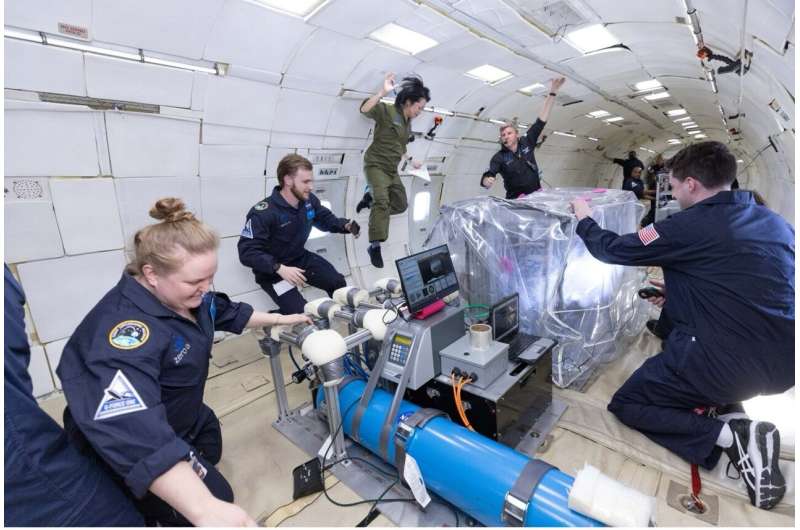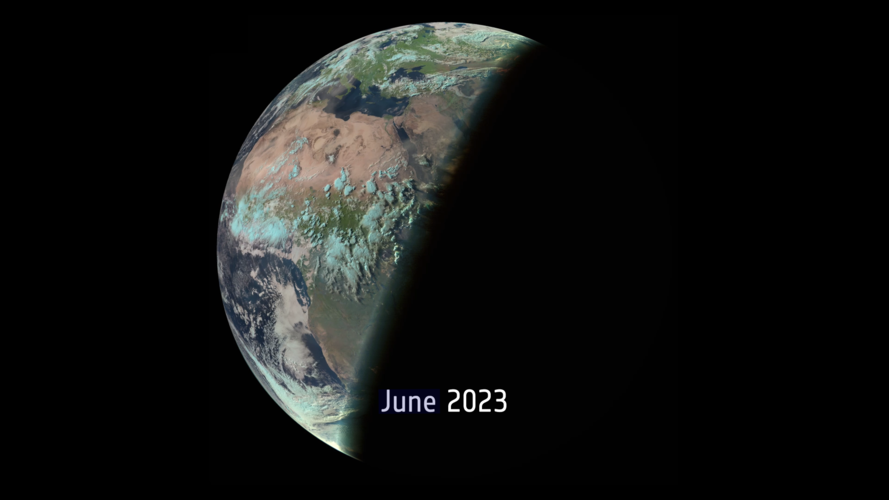New Evidence Suggests Dark Matter Influence Extends Further Than Thought
Thursday, 20 June 2024 23:09 Scientists at Case Western Reserve University have discovered new evidence that could reshape our understanding of the cosmos.
Tobias Mistele, a post-doctoral scholar in the Department of Astronomy at Case Western Reserve's College of Arts and Sciences, used "gravitational lensing" to study dark matter. He found that the rotation curves of galaxies remain flat for millions of light years.
Scientists at Case Western Reserve University have discovered new evidence that could reshape our understanding of the cosmos.
Tobias Mistele, a post-doctoral scholar in the Department of Astronomy at Case Western Reserve's College of Arts and Sciences, used "gravitational lensing" to study dark matter. He found that the rotation curves of galaxies remain flat for millions of light years. Solar Orbiter Observes Major Solar Activity
Thursday, 20 June 2024 23:09 The hyperactive sunspot region responsible for the beautiful auroras earlier in May was still alive and kicking when it rotated away from Earth's view. Watching from the other side of the Sun, the ESA-led Solar Orbiter mission detected this same region producing the largest solar flare of this solar cycle. By observing the Sun from all sides, ESA missions reveal how active sunspot regions evolve
The hyperactive sunspot region responsible for the beautiful auroras earlier in May was still alive and kicking when it rotated away from Earth's view. Watching from the other side of the Sun, the ESA-led Solar Orbiter mission detected this same region producing the largest solar flare of this solar cycle. By observing the Sun from all sides, ESA missions reveal how active sunspot regions evolve Iridium Expands Satellite Time and Location Service to Europe and Asia Pacific
Thursday, 20 June 2024 23:09 Iridium Communications Inc. (Nasdaq: IRDM), a provider of global voice and data satellite communications, announced the expanded commercial availability of its Satellite Time and Location (STL) service.
Iridium partners are now authorized to sell the service in parts of Europe and Asia Pacific. The STL service is designed to protect GNSS systems, like GPS and Galileo, with a signal resista
Iridium Communications Inc. (Nasdaq: IRDM), a provider of global voice and data satellite communications, announced the expanded commercial availability of its Satellite Time and Location (STL) service.
Iridium partners are now authorized to sell the service in parts of Europe and Asia Pacific. The STL service is designed to protect GNSS systems, like GPS and Galileo, with a signal resista SES completes euro 3 billion acquisition financing syndication
Thursday, 20 June 2024 23:09 SES S.A. has successfully syndicated a euro 3 billion acquisition financing package to support its earlier agreement to acquire Intelsat S.A. Deutsche Bank AG and Morgan Stanley underwrote a euro 3 billion bridge facility to support SES's financing needs as part of the agreement.
The euro 3 billion bridge facility has now been syndicated with a high level of commitments to an international
SES S.A. has successfully syndicated a euro 3 billion acquisition financing package to support its earlier agreement to acquire Intelsat S.A. Deutsche Bank AG and Morgan Stanley underwrote a euro 3 billion bridge facility to support SES's financing needs as part of the agreement.
The euro 3 billion bridge facility has now been syndicated with a high level of commitments to an international Honeywell sees space opportunity with $1.9 billion CAES acquisition
Thursday, 20 June 2024 21:13

House Intelligence chair blasts White House over Russia’s space nuke threat
Thursday, 20 June 2024 18:00

Next-generation NASA technologies tested in flight
Thursday, 20 June 2024 17:55
Teams of NASA researchers put their next-generation technologies to the microgravity test in a series of parabolic flights that aim to advance innovations supporting the agency's space exploration goals.
These parabolic flights provide a gateway to weightlessness, allowing research teams to interact with their hardware in reduced gravity conditions for intervals of approximately 22 seconds. The flights, which ran from February to April, took place aboard Zero Gravity Corporation's G-FORCE ONE aircraft and helped to advance several promising space technologies.
Under the Fundamental Regolith Properties, Handling, and Water Capture (FLEET) project, researchers tested an ultrasonic blade technology in a regolith simulant at lunar and Martian gravities. On Earth, vibratory tools reduce the forces between the tool and the soil, which also lowers the reaction forces experienced by the system.
Ursa Space partners with Japan’s NEC to deliver SAR data insights
Thursday, 20 June 2024 16:00

Starlab Space adds Palantir as strategic partner on commercial space station effort
Thursday, 20 June 2024 13:34

Summer solstice 2024
Thursday, 20 June 2024 13:15 Video:
00:00:10
Video:
00:00:10
Summer officially begins in the Northern Hemisphere today 20 June, marking the longest day of the year. The summer solstice, which is when the Sun reaches the most northerly point in the sky, is set to occur tonight at 21:50 BST/22:50 CEST.
During the summer solstice, the Northern Hemisphere will experience the longest period of sunlight in a day or the longest day of the year. This is because of Earth’s position in orbit around the Sun and the way the North Pole is tilted towards the Sun during the solstice.
The Sun’s rays hit the Northern Hemisphere at their most direct angle, resulting in the
Michelle Parker, Boeing Space Mission Systems – Leading Women in Space
Thursday, 20 June 2024 13:07

Webb snaps first image of aligned jets from newborn stars
Thursday, 20 June 2024 13:00
For the first time, a phenomenon astronomers have long hoped to image directly has been captured by the NASA/ESA/CSA James Webb Space Telescope’s Near-InfraRed Camera (NIRCam). In this stunning image of the Serpens Nebula, the discovery lies in the northern area of this young, nearby star-forming region.
Hypersonic vehicles for Europe’s fast future into space
Thursday, 20 June 2024 10:39
When hypersonic aeronautics and space exploration meet, European engineers dream of a future fast-track return-ticket to space.





